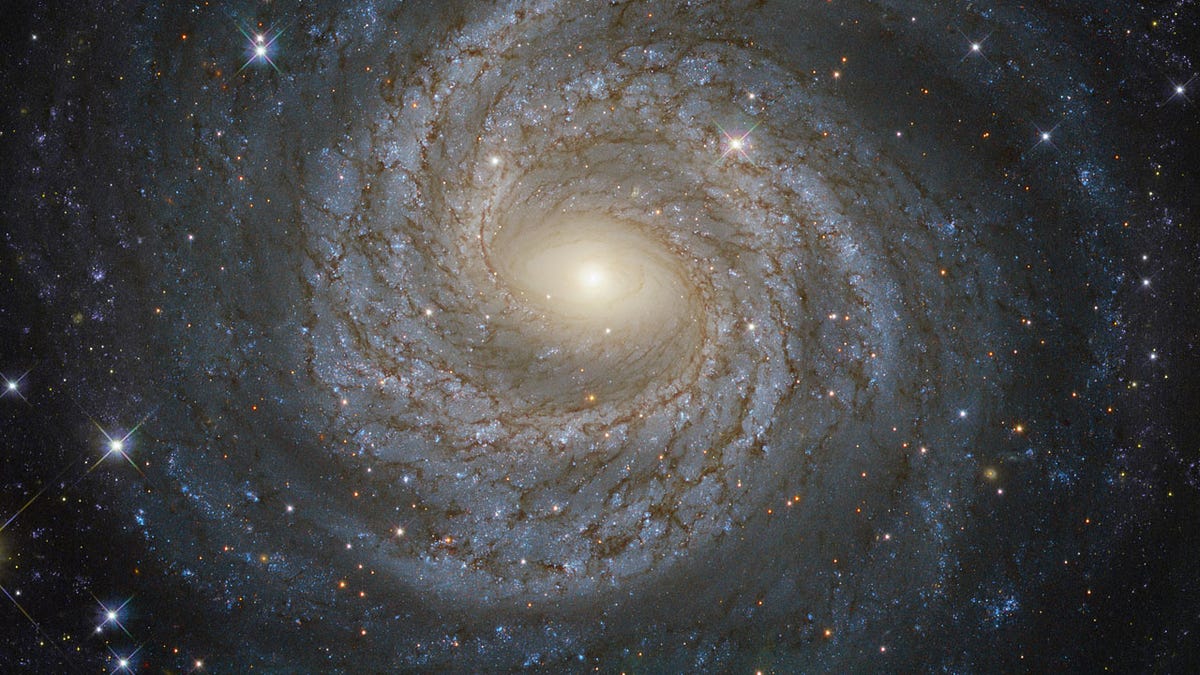Whoa! Let's slow down talk of a fifth fundamental force of nature
A new discovery could upend our understanding of particle physics and the forces driving the universe. Unless it's all just based on a goof.

What holds together the cosmos... and us too? We might not have the whole picture.
This week in science and physics nerd circles, facial muscles have been at an increased risk for sprains. That's thanks to the eyebrow-raising over headlines declaring scientists have "confirmed the possibility" a fifth fundamental force of nature exists.
If true, it would require rewriting an awful lot of textbooks. I reached out to someone who lives and breathes particle physics to see how excited we should be getting at this point. More on that later.
First, a little primer on the four key things that we take for granted even though they help hold our very reality together.
Most of us interact with two of the fundamental forces every day: Gravity keeps you from being propelled toward the horizon by even the most casual fist bump, and electromagnetism is enabling you to read these words right now. The strong and weak nuclear forces round out the forceful quartet and are even more invisible, interacting only around the nucleus of atoms, but they're there holding everything together nonetheless.
That's all we've been sure about for years. But theoretical physicists at the University of California at Irvine say it's possible they've come across evidence of a fifth force that could help shine a light into the dark corners of the universe.
"If true, it's revolutionary," said Jonathan Feng, professor of physics and astronomy at UC Irvine, in a news release Monday. "If confirmed by further experiments, this discovery of a possible fifth force would completely change our understanding of the universe, with consequences for the unification of forces and dark matter."
So what is this fifth force anyway, if it even exists? Well, we don't really know at this point. To make a long story short, some experimental nuclear physicists in Hungary were looking for so-called "dark photons," a hypothetical particle that could be linked to the elusive dark matter that's believed to make up as much as 85 percent of the universe. What they found instead was an odd anomaly they couldn't explain.
"The experimentalists weren't able to claim that it was a new force," Feng said. "They simply saw an excess of events that indicated a new particle, but it was not clear to them whether it was a matter particle or a force-carrying particle."
This is where Feng and his team entered the picture. They took a look at the Hungarians' data and other previous experiments and came up with a new theory: The anomaly they saw could be explained by a new protophobic gauge boson. In (slightly more) plain English, a gauge boson is a particle that acts as a carrier for force -- think of them as a tiny bundle of energy. The protophobic part comes from the fact this new particle was observed to only interact with electrons and neutrons, but not protons. This interaction happens at an extremely limited range, which is probably why it hasn't been noticed before.
So to sum up some really dense particle physics in one line: If the UCI theory proves true, there could be a hidden, miniscule fifth force that might be the bridge between our current understanding of particle physics and the unseen "dark" sector of physics that accounts for things like dark matter.
Of course, there could be another explanation for the anomaly the Hungarians found.
"If the measurement is confirmed, this is potentially a big deal," Don
Lincoln wrote at length about the possibility of a fifth force uncovered through the work of the teams in Hungary and at UCI in early July, before the Irvine team's latest paper came out last Thursday.
I contacted him to get his thoughts on the latest analysis, and his bottom line remains essentially unchanged: He thinks the theory of a fifth force comes from a top-notch team of researchers at UCI, but he's less confident in the original data from the Hungarian team that their idea is built upon.
"My first reaction is that I have great respect for the Irvine group. You can absolutely accept that they aren't cranks,"
The researchers at UCI actually agree with
"The reason it's been hard to find is that its interactions are very feeble. That said, because the new particle is so light, there are many experimental groups working in small labs around the world that can follow up the initial claims, now that they know where to look."
So stay tuned, particle physics fans. The great protophobic gauge boson hunt has already begun!

